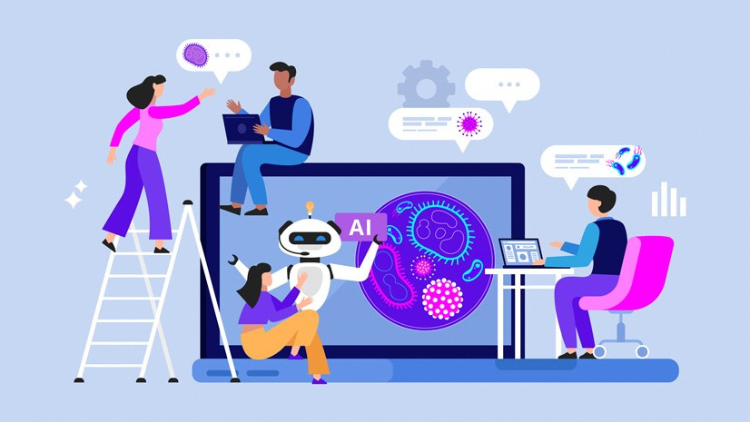
Did you know that there are over 100,000 species of fungi in the world? From the mushrooms we eat, to those that cannot be seen with the naked eye, identifying them is no easy feat. Yet it is crucial to identify the species accurately given that there are over 4,000 clinically important species that may cause life-threatening diseases.
At the forefront of Artificial Intelligence (AI) advancement in healthcare, Singapore General Hospital’s (SGH) Department of Microbiology and Synapxe’s Data Analytics and AI department formed a project team to collaborate on the development of a Fungal Species Detection using Artificial Intelligence (FungAI), a promising computer vision AI model being used in trails to medically identify common fungal species from patients’ specimens.

The project team from SGH and Synapxe (L to R): Ms Tan Mei Gie (SGH), Mr Benny Yip (SGH), Ms Millie Goh (Synapxe), Ms Christine Ang (Synapxe), Mr Benedict Lim (Collaborator), Mr Ho Yew Kay (Synapxe), Dr Tan Yen Ee (SGH), Mr Chia Kuok Wei (SGH), Dr Jeremy Ng (SGH), Dr Chan Chee Seng (SGH), Mr Lawrence Lin (SGH), Ms Samantha Tan (SGH), Dr Goh Han Leong (Synapxe), Prof Koh Tse Hsien (SGH) and Prof. Tony Lim (SGH).
Currently in pilot phase, FungAI aims to digitalise mycology identification processes and enhance diagnostic capabilities through AI technology. This will boost the overall efficiency of mycology diagnostics within the hospital, with the promise to improve diagnostic accuracy, streamline laboratory workflows and enhance laboratory capabilities.
Unlocking the potential of FungAI
FungAI aims to speed up diagnosis and improve laboratory productivity by maximising laboratory resources and efficiencies using AI.
Here are three ways FungAI can potentially improve healthcare delivery:
1. Accelerate fungal identification for commonly encountered moulds with the potential to reduce turnaround time for diagnostic results.
2. Empower laboratory staff to confidently perform basic mycology, ensuring timely and accurate results for patients and healthcare professionals.
3. Streamline laboratory workflows and enhance productivity gain for common fungal identification through digitalisation.
“With the rise in antifungal resistance, it is important to identify fungal species at a faster rate for earlier appropriate intervention. The FungAI technology aims to empower laboratories with limited resources by reducing the reliance on skilled workers which may take many years of training and experience to be proficient in the specialty. This is especially important given the difficulties of getting trained staff in both the current and future job market.”
- Dr Tan Yen Ee, Senior Consultant, Department of Microbiology, Singapore General Hospital

